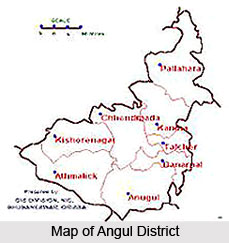 As per the demographic survey of Angul in 2001, the entire district has a total population of 11,40,003, of which 5,876,234 constitute the male and 5,52,769 are the female population. The average density of population is about 179 per sq.km. About 30% of total populace belongs to the Scheduled caste and the Scheduled tribes. Though Angul is extremely developed financially, a major section of population live in the rural zone depending solely on Agriculture, as the demographic report reveals.
As per the demographic survey of Angul in 2001, the entire district has a total population of 11,40,003, of which 5,876,234 constitute the male and 5,52,769 are the female population. The average density of population is about 179 per sq.km. About 30% of total populace belongs to the Scheduled caste and the Scheduled tribes. Though Angul is extremely developed financially, a major section of population live in the rural zone depending solely on Agriculture, as the demographic report reveals.
According to the information of the demographers about the town planning of Angul, it is exceptionally urbanized. About 73 PHCs (Public Health Centers) have been set up till date. To improve the rural infrastructure, emphasis has been given in the development of the health centers in those areas and to improve the condition of sanitation. Within a period of 10 years (1991-2001), Angul has made a notable progress to improve the communication system. Presently there are 237 Post Offices and 20 telephone exchanges set up in Angul. The demographers have remarked that with the Government concern, post offices and telephone exchanges are also constructed in the remote villages. During the last plan-period about 1166 villages are being electrified.
The standard of education in Angul since the beginning of the plan period of independent India is making a spectacular progress. Recently the Government has been successful enough to gather nearly all the students of 6 to 14 years under the school system. Due to the successful campaign of the educational programs, Angul is presently a prominent name in the field of elementary education.
The demographic report of Angul reveals Angul as one of the developed district in the socio-economic and educational panorama.






